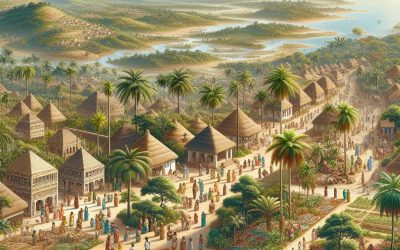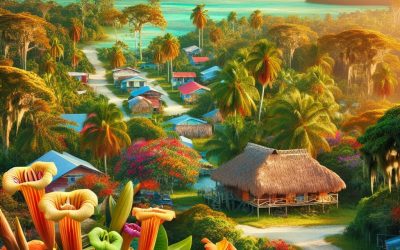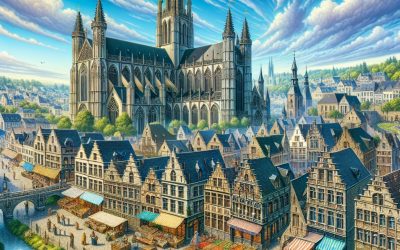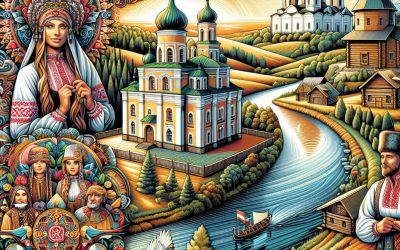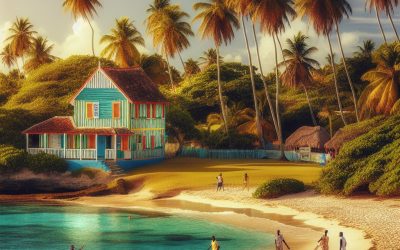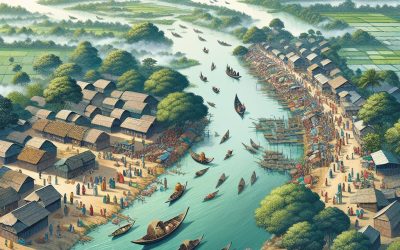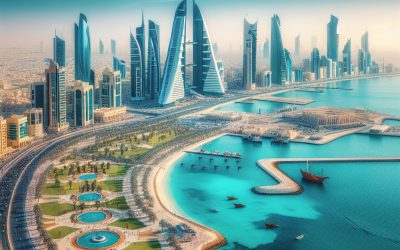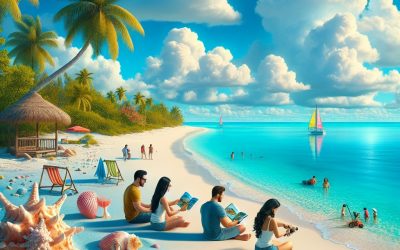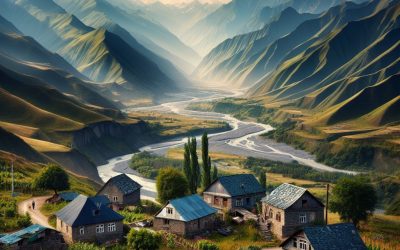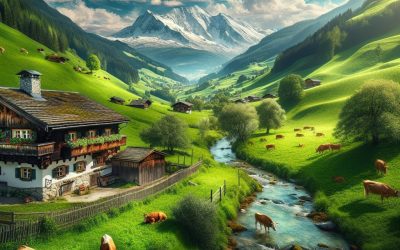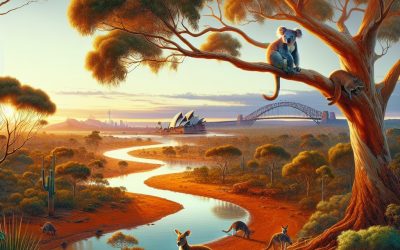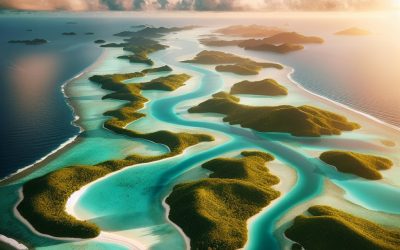World Geography
Geography is the study of the Earth’s landscapes, environments, and the relationships between people and their surroundings. It encompasses both the physical aspects of the Earth, such as its landforms, bodies of water, and climate, as well as the human aspects, including population distribution, cultures, and economies. World geography is a broad field that seeks to understand the complexities of our planet and how humans interact with it. By studying world geography, we can gain a deeper appreciation for the diversity of our planet and the interconnectedness of its various regions.
Geography is a multidisciplinary field that draws on elements of physical science, social science, and humanities. It involves the use of maps, spatial analysis, and geographic information systems (GIS) to understand the Earth’s surface and the processes that shape it. World geography also encompasses the study of human geography, which examines the ways in which people and their activities are distributed across the Earth. By understanding world geography, we can better appreciate the environmental, cultural, and economic challenges facing different regions of the world. This knowledge is crucial for addressing global issues such as climate change, resource management, and international development.
The Five Oceans and Seven Continents
The Earth’s surface is divided into five major oceans: the Pacific, Atlantic, Indian, Southern (or Antarctic), and Arctic Oceans. These vast bodies of water play a crucial role in regulating the Earth’s climate and supporting diverse marine ecosystems. The oceans also serve as important transportation routes and a source of food and other natural resources for human societies around the world.
In addition to the oceans, the Earth’s landmasses are divided into seven continents: Africa, Antarctica, Asia, Europe, North America, Australia (or Oceania), and South America. Each continent has its own unique physical and cultural characteristics, shaped by millions of years of geological processes and human history. From the deserts of Africa to the rainforests of South America, the continents offer a rich tapestry of landscapes and environments for exploration and study.
Major Mountain Ranges and Deserts
The Earth’s surface is also marked by major mountain ranges and deserts that have shaped the planet’s physical and cultural landscapes. The Himalayas, for example, are the highest mountain range in the world and are home to diverse ecosystems and cultures in countries such as India, Nepal, and Bhutan. The Andes in South America, the Rockies in North America, and the Alps in Europe are other prominent mountain ranges that have influenced human settlement patterns and economic activities.
Deserts cover about one-third of the Earth’s land surface and are characterized by low precipitation and extreme temperatures. The Sahara Desert in Africa is the largest hot desert in the world, while the Gobi Desert in Asia is one of the largest cold deserts. Deserts are not only home to unique flora and fauna but have also been important trade routes and cultural crossroads throughout history.
Climate Zones and Biomes
The Earth’s climate is influenced by a variety of factors, including latitude, altitude, ocean currents, and prevailing winds. As a result, the planet is divided into different climate zones, each with its own characteristic weather patterns and ecosystems. The equator, for example, experiences a tropical climate with high temperatures and heavy rainfall, while the polar regions have a cold and dry climate.
These climate zones give rise to different biomes, or large ecological areas characterized by distinct plant and animal communities. The tropical rainforest biome, found near the equator, is home to a diverse array of species and is vital for regulating the Earth’s climate. The grasslands biome, found in regions such as the African savannah and North American prairies, supports grazing animals and has been important for human agriculture throughout history.
Human Geography and Population Distribution
Human geography examines the ways in which people and their activities are distributed across the Earth’s surface. It encompasses topics such as population growth, migration patterns, urbanization, and cultural diversity. Understanding human geography is crucial for addressing global challenges such as poverty, inequality, and environmental degradation.
Population distribution is uneven across the world, with some regions experiencing rapid population growth while others are declining. The majority of the world’s population lives in Asia, particularly in countries such as China and India. Urban areas are also growing rapidly, with more than half of the world’s population now living in cities. This trend has significant implications for infrastructure development, resource management, and social inequality.
Historical and Cultural Geography
Historical geography examines how human activities have shaped the Earth’s landscapes over time. It explores topics such as colonialism, trade routes, and the rise and fall of empires. Cultural geography focuses on how human cultures have developed in different regions of the world and how they interact with their environments.
The Silk Road, for example, was an ancient trade route that connected China with Europe and facilitated the exchange of goods, ideas, and technologies across Eurasia. This historical trade route had a profound impact on the development of cultures and economies along its path. Similarly, cultural geographers study how different societies have adapted to their environments through practices such as agriculture, architecture, and religious beliefs.
The Importance of Geographic Knowledge
Geographic knowledge is crucial for addressing global challenges such as climate change, resource management, and international development. By understanding world geography, we can better appreciate the environmental, cultural, and economic challenges facing different regions of the world. This knowledge is crucial for addressing global issues such as climate change, resource management, and international development.
Geographic knowledge also helps us to understand our interconnectedness with other regions of the world. By studying world geography, we can gain a deeper appreciation for the diversity of our planet and the interconnectedness of its various regions. This understanding can foster a sense of global citizenship and empathy for people from different cultures and backgrounds.
In conclusion, world geography is a complex and multifaceted field that encompasses both physical and human aspects of the Earth’s landscapes. By studying world geography, we can gain a deeper appreciation for the diversity of our planet and the interconnectedness of its various regions. This knowledge is crucial for addressing global challenges such as climate change, resource management, and international development. It also helps us to understand our interconnectedness with other regions of the world and fosters a sense of global citizenship.
FAQs
What is world geography?
World geography is the study of the Earth’s landscapes, environments, and the relationships between people and their environments. It encompasses the physical features of the Earth, as well as the human activity that takes place on it.
Why is world geography important?
World geography is important because it helps us understand the world around us. It provides insights into the physical and human processes that shape our planet, and helps us make informed decisions about how to interact with our environment.
What are the main branches of world geography?
The main branches of world geography include physical geography, which focuses on the Earth’s natural features and processes, and human geography, which examines the relationships between people and their environments.
How does world geography impact our daily lives?
World geography impacts our daily lives in numerous ways, from influencing the weather and climate we experience, to shaping the availability of natural resources and influencing the distribution of populations and cultures around the world.
What are some key concepts in world geography?
Key concepts in world geography include location, place, human-environment interaction, movement, and region. These concepts help geographers understand and interpret the world around them.
Benin
Benin (République du Bénin (Republic of Benin)) Capital of Benin : Porto-Novo Population (Estimated July 2012): 9,598,787 Area: 112,622km2 or 43,484mi2 Currency: CFA Franc (CFAF) Official Language: French Political Information: Parliamentary Democracy Official Religion: No Official Religion (approximately 27.1% of the population are Roman Catholic, 24.4% are Muslim, 17.3% are Vodoun, 10.4% are Protestant and 20.8% have other religious beliefs) Highest Mountain: Mont Sokbaro at 658m or 2,158ft GDP Official Exchange Rate (OER is more precise at gauging a countries economic power) (Estimated 2011): $7.5 billion (US$) or £4.5 billion (GBP) GDP (OER) Per Capita (per member of the population estimated 2011): (US$) or (GBP) GDP Purchasing Power Parity (PPP is good for gauging living conditions and use of resources but not as accurate as OER. This data has been calculated based on the sum value of all goods and services produced in the country valued at prices prevailing in the United States) (Estimated 2011): $14.79 billion (US$) or £8.874 billion (GBP) GDP (PPP) Per Capita (per member of the population estimated 2011): $1,500 (US$) or £900 (GBP) Time Zone (GMT/UTC): +1:00 Counties/Provinces/States: (departments) Alibori, Atakora, Atlantique, Borgou, Collines, Kouffo, Donga, Littoral, Mono, Oueme, Plateau, Zou Leaders: President Patrice TALON (since 6 April 2016 (the president is both chief of state and head of government with Prime Minister position being abolished in 2016)) Sources: CIA World Fact Book, Encyclopaedia Britannica. Benin, officially known as the Republic of Benin, is a small country located in West Africa. It is bordered by Nigeria to the east, Togo to the west, Burkina Faso and Niger to...
Belize
Belize Capital of Belize : Belmopan Population (Estimated July 2012): 327,719 Area: 22,965km2 or 8,867mi2 Currency: Belize Dollar (BZ$) Official Language: English Political Information: Parliamentary Democracy and Constitutional Monarchy Official Religion: No Official Religion (approximately 49.6% of the population are Roman Catholic, 25.5% are Protestant, 15.5% have other religious beliefs and 9.4% have no religious beliefs) Highest Mountain: Doyle’s Delight at 1,124m or 3,688ft GDP Official Exchange Rate (OER is more precise at gauging a countries economic power) (Estimated 2011): $1.5 billion (US$) or £900 million(GBP) GDP (OER) Per Capita (per member of the population estimated 2011): (US$) or (GBP) GDP Purchasing Power Parity (PPP is good for gauging living conditions and use of resources but not as accurate as OER. This data has been calculated based on the sum value of all goods and services produced in the country valued at prices prevailing in the United States) (Estimated 2011): $2.754 billion (US$) or £1.652 billion (GBP) GDP (PPP) Per Capita (per member of the population estimated 2011): $8,300 (US$) or £4,980 (GBP) Time Zone (GMT/UTC): -6:00 Districts: Belize, Cayo, Corozal, Orange Walk, Stann Creek, Toledo Leaders: Monarch is Queen Elizabeth II with Sir Colville Young as Governor General and Dean Barrow as Prime Minister. Sources: CIA World Fact Book, Encyclopaedia Britannica. Belize is a small country located on the eastern coast of Central America. It is bordered by Mexico to the north and Guatemala to the west and south. Despite its small size, Belize is known for its rich cultural heritage, stunning natural beauty, and warm and welcoming people. With a population of...
Belgium
Belgium (Koninkrijk België (Dutch); Royaume de Belgique (French); Königreich Belgien (German) (Kingdom of Belgium)) Capital of Belgium : Brussels Population (Estimated July 2012): 10,438,353 Area: 30,528km2 or 11,787mi2 Currency: Euro (€) Official Language: Dutch; French; German Political Information: Federal Parliament with Constitutional Monarchy Official Religion: No Official Religion (approximately 75% of the population are Roman Catholic, 25% have other religious beliefs) Highest Mountain: Botrange at 694m or 2,277ft GDP Official Exchange Rate (OER is more precise at gauging a countries economic power) (Estimated 2011): $529 billion (US$) or £317.4 billion(GBP) GDP (OER) Per Capita (per member of the population estimated 2011): (US$) or (GBP) GDP Purchasing Power Parity (PPP is good for gauging living conditions and use of resources but not as accurate as OER. This data has been calculated based on the sum value of all goods and services produced in the country valued at prices prevailing in the United States) (Estimated 2011): $412 billion (US$) or £247.2 billion (GBP) GDP (PPP) Per Capita (per member of the population estimated 2011): $37,600 (US$) or £22,560 (GBP) Time Zone (GMT/UTC): +1:00 Counties/Provinces/States: 3 regions (French: regions, singular – region; Dutch: gewesten, singular – gewest); Brussels-Capital Region, also known as Brussels Hoofdstedelijk Gewest (Dutch), Region de Bruxelles-Capitale (French long form), Bruxelles-Capitale (French short form); Flemish Region (Flanders), also known as Vlaams Gewest (Dutch long form), Vlaanderen (Dutch short form), Region Flamande (French long form), Flandre (French short form); Walloon Region (Wallonia), also known as Region Wallone (French long form), Wallonie (French short form), Waals Gewest (Dutch long form), Wallonie (Dutch short form) Leaders: King...
Belarus
Belarus (Respublika Belarus (Republic of Belarus)) Capital of Belarus : Minsk Population (Estimated July 2012): 9,542,883 Area: 207,595km2 or 80,153mi2 Currency: Belarusian rubel (or ruble) (Br) Official Language: Belarusian; Russian Political Information: Republic Official Religion: No Official Religion (approximately 80% of the population are Eastern Orthodox and 20% have other religious beliefs) Highest Mountain: Dzyarzhynskaya Hara at 346m or 1,135ft GDP Official Exchange Rate (OER is more precise at gauging a countries economic power) (Estimated 2011): $57.7 billion (US$) or £34.62 billion (GBP) GDP (OER) Per Capita (per member of the population estimated 2011): (US$) or (GBP) GDP Purchasing Power Parity (PPP is good for gauging living conditions and use of resources but not as accurate as OER. This data has been calculated based on the sum value of all goods and services produced in the country valued at prices prevailing in the United States) (Estimated 2011): $141.2 billion (US$) or £84.72 billion (GBP) GDP (PPP) Per Capita (per member of the population estimated 2011): $14,900 (US$) or £8,940 (GBP) Time Zone (GMT/UTC): +3:00 Provinces (Voblastsi): Brest, Homyel’ (Gomel), Hrodna (Grodno), Mahilyow (Mogilev), Minsk, Vitsyebsk (Vitebsk) Municipality (Horad): Horad Minsk (Minsk City) Leaders: president Aleksandr LUKASHENKO (since 20 July 1994); prime minister Andrey KOBYAKOV (since 27 December 2014); first deputy prime minister Vasiliy MATYUSHEVSKIY (since 27 December 2014) Sources: CIA World Fact Book, Encyclopaedia Britannica, Belarus, officially known as the Republic of Belarus, is a landlocked country located in Eastern Europe. It is bordered by Russia to the northeast, Ukraine to the south, Poland to the west, and Lithuania and Latvia to the...
Barbados
Barbados Capital: Pago Pago Population (Estimated July 2012): 68,061 Area: 200km2 or 77mi2 Currency: United States Dollar (U.S.$) Official Language: English; Samoan Political Information: Unincorporated and unorganized territory of the US Official Religion: No Official Religion (approximately 50% of the population is Christian Congregationalist, 20% are Roman Catholic and 30% are either protestant or have other religious beliefs) Highest Mountain: Lata Mountain at 964m or 3162 feet GDP Official Exchange Rate (OER is more precise at gauging a countries economic power) (Estimated 2005): $462.2 million (US$) or (GBP) GDP (OER) Per Capita (per member of the population estimated 2011): (US$) or (GBP) GDP Purchasing Power Parity (PPP is good for gauging living conditions and use of resources but not as accurate as OER. This data has been calculated based on the sum value of all goods and services produced in the country valued at prices prevailing in the United States) (Estimated 2007): $575.3 million (US$) or (GBP) GDP (PPP) Per Capita (per member of the population estimated 2007): $8,000 (US$) or (GBP) Time Zone (GMT/UTC): -11:00 Counties/Provinces/States: three districts and two islands at the second order; Eastern, Manu’a, Rose Island, Swains Island, Western Leaders: President Donald Trump; Governor Togiola Tulafono Sources: CIA World Fact Book, Encyclopaedia Britannica. Barbados, located in the eastern Caribbean Sea, is a popular tourist destination known for its stunning beaches, vibrant culture, and warm hospitality. This small island nation offers visitors a taste of paradise with its crystal-clear waters, white sandy beaches, and lush tropical landscapes. Whether you’re looking to relax on the beach, explore historical landmarks, or indulge in delicious cuisine,...
Bangladesh
Bangladesh (Gana Prajatantri Bangladesh (People’s Republic of Bangladesh)) Capital: Pago Pago Population (Estimated July 2012): 68,061 Area: 200km2 or 77mi2 Currency: United States Dollar (U.S.$) Official Language: English; Samoan Political Information: Unincorporated and unorganized territory of the US Official Religion: No Official Religion (approximately 50% of the population is Christian Congregationalist, 20% are Roman Catholic and 30% are either protestant or have other religious beliefs) Highest Mountain: Lata Mountain at 964m or 3162 feet GDP Official Exchange Rate (OER is more precise at gauging a countries economic power) (Estimated 2005): $462.2 million (US$) or (GBP) GDP (OER) Per Capita (per member of the population estimated 2011): (US$) or (GBP) GDP Purchasing Power Parity (PPP is good for gauging living conditions and use of resources but not as accurate as OER. This data has been calculated based on the sum value of all goods and services produced in the country valued at prices prevailing in the United States) (Estimated 2007): $575.3 million (US$) or (GBP) GDP (PPP) Per Capita (per member of the population estimated 2007): $8,000 (US$) or (GBP) Time Zone (GMT/UTC): -11:00 Counties/Provinces/States: three districts and two islands at the second order; Eastern, Manu’a, Rose Island, Swains Island, Western Leaders: President Donald Trump; Governor Togiola Tulafono Sources: CIA World Fact Book, Encyclopaedia Britannica. Bangladesh, officially known as the People’s Republic of Bangladesh, is a country located in South Asia. It is bordered by India to the west, north, and east, and by Myanmar to the southeast. With a population of over 160 million people, Bangladesh is the eighth-most populous country in the world. Despite its relatively...
Bahrain
Bahrain (Mamlakat al-Bahrain (Kingdom of Bahrain)) Capital of Bahrain : Manama Population (Estimated July 2012): 1,248,348 Area: 757km2 or 292mi2 Currency: Bahraini Dinar (BD) Official Language: Arabic Political Information: Constitutional Monarchy Official Religion: Islam (approximately 81.2% of the population are Muslim (Shia and Sunni), 9% are Christian and 9.8% have other religious beliefs) Highest Point: Jabal ad Dukhan at 122m or 400ft GDP Official Exchange Rate (OER is more precise at gauging a countries economic power) (Estimated 2011): $26.4 billion (US$) or £15.84 billion (GBP) GDP (OER) Per Capita (per member of the population estimated 2011): (US$) or (GBP) GDP Purchasing Power Parity (PPP is good for gauging living conditions and use of resources but not as accurate as OER. This data has been calculated based on the sum value of all goods and services produced in the country valued at prices prevailing in the United States) (Estimated 2011): $30.8 billion (US$) or £18.48 billion (GBP) GDP (PPP) Per Capita (per member of the population estimated 2011): $27,300 (US$) or £16,380 (GBP) Time Zone (GMT/UTC): +3:00 Governorates: Asamah, Janubiyah, Muharraq, Shamaliyah, Wasat Leaders: King Hamad bin Isa Al-Khalifa; Crown Prince Salman bin Hamad Al-Khalifa; Prime Minister Khalifa bin Salman Al-Khalifa Sources: CIA World Fact Book, Encyclopaedia Britannica, Introduction to Bahrain: A small island nation in the Persian Gulf Bahrain, a small island nation located in the Persian Gulf, is often referred to as the “Pearl of the Gulf” due to its rich history, vibrant culture, and stunning natural beauty. It is an archipelago consisting of 33 islands, with Bahrain Island being the largest...
Bahamas
The Bahamas Capital of the Bahamas : Nassau Population (Estimated July 2012): 316,182 Area: 13,878km2 or 5,358mi2 Currency: Bahamian Dollar (BSD) Official Language: English – Bahamian Dialect Political Information: Parliamentary Democracy and Constitutional Monarchy Official Religion: No Official Religion (approximately 67.6% of the population are Protestant, 13.5% are Roman Catholic, 15.2% have other Christian beliefs, 0.8% have other religious beliefs and 2.9% have no or unspecified religious beliefs) Highest Mountain: Mount Alvernia at 63m or 206ft GDP Official Exchange Rate (OER is more precise at gauging a countries economic power) (Estimated 2011): $8.1 billion (US$) or £4.86 billion(GBP) GDP (OER) Per Capita (per member of the population estimated 2011): (US$) or (GBP) GDP Purchasing Power Parity (PPP is good for gauging living conditions and use of resources but not as accurate as OER. This data has been calculated based on the sum value of all goods and services produced in the country valued at prices prevailing in the United States) (Estimated 2011): $10.81 billion (US$) or £6.486 billion (GBP) GDP (PPP) Per Capita (per member of the population estimated 2011): $30,900 (US$) or £18,540 (GBP) Time Zone (GMT/UTC): – 5:00 Districts: Acklins Islands, Berry Islands, Bimini, Black Point, Cat Island, Central Abaco, Central Andros, Central Eleuthera, City of Freeport, Crooked Island and Long Cay, East Grand Bahama, Exuma, Grand Cay, Harbour Island, Hope Town, Inagua, Long Island, Mangrove Cay, Mayaguana, Moore’s Island, North Abaco, North Andros, North Eleuthera, Ragged Island, Rum Cay, San Salvador, South Abaco, South Andros, South Eleuthera, Spanish Wells, West Grand Bahama Leaders: Monarch is Queen Elizabeth II represented by Governor General Sir...
Azerbaijan
Azerbaijan (Azərbaycan Respublikası (Republic of Azerbaijan)) Capital of Azerbaijan : Baku (Bakı) Population (Estimated July 2012): 9,493,600 Area: 86,600km2 or 33,436mi2 Currency: Manat (AZN) Official Language: Azerbaijanian Political Information: Parliamentary Republic Official Religion: No Official Religion (approximately 93.4% of the population are Muslim, 2.5% are Russian Orthodox, 2.3% are Armenian Orthodox and 1.8% have other religious beliefs) Highest Mountain: Şahdağ Mountain at 4,243m or 13,921ft GDP Official Exchange Rate (OER is more precise at gauging a countries economic power) (Estimated 2011): $68.5 billion (US$) or £41.1 billion (GBP) GDP (OER) Per Capita (per member of the population estimated 2011): (US$) or (GBP) GDP Purchasing Power Parity (PPP is good for gauging living conditions and use of resources but not as accurate as OER. This data has been calculated based on the sum value of all goods and services produced in the country valued at prices prevailing in the United States) (Estimated 2011): $93.02 billion (US$) or £55.812 billion (GBP) GDP (PPP) Per Capita (per member of the population estimated 2011): $10,200 (US$) or £6,120 (GBP) Time Zone (GMT/UTC): +4:00 Counties/Provinces/States: Rayons: Abseron Rayonu, Agcabadi Rayonu, Agdam Rayonu, Agdas Rayonu, Agstafa Rayonu, Agsu Rayonu, Astara Rayonu, Balakan Rayonu, Barda Rayonu, Beylaqan Rayonu, Bilasuvar Rayonu, Cabrayil Rayonu, Calilabad Rayonu, Daskasan Rayonu, Davaci Rayonu, Fuzuli Rayonu, Gadabay Rayonu, Goranboy Rayonu, Goycay Rayonu, Haciqabul Rayonu, Imisli Rayonu, Ismayilli Rayonu, Kalbacar Rayonu, Kurdamir Rayonu, Lacin Rayonu, Lankaran Rayonu, Lerik Rayonu, Masalli Rayonu, Neftcala Rayonu, Oguz Rayonu, Qabala Rayonu, Qax Rayonu, Qazax Rayonu, Qobustan Rayonu, Quba Rayonu, Qubadli Rayonu, Qusar Rayonu, Saatli Rayonu, Sabirabad Rayonu, Saki Rayonu, Salyan Rayonu, Samaxi Rayonu,...
Austria
Austria (Republik Österreich (Republic of Austria)) Capital of Austria : Vienna Population (Estimated July 2012): 8,219,743 Area: 83,879km2 or 32,386mi2 Currency: Euro (€) Official Language: German Political Information: Federal State Official Religion: No Official Religion (approximately 73.6% of the population is Roman Catholic, 4.7% are Protestant, 4.2% are Muslim, 5.5% have other or unspecified religious beliefs and 12% have no religious beliefs) Highest Mountain: Grossglockner at 3,798m or 12,460ft GDP Official Exchange Rate (OER is more precise at gauging a countries economic power) (Estimated 2011): $425.1 billion (US$) or £255.06 billion(GBP) GDP (OER) Per Capita (per member of the population estimated 2011): (US$) or (GBP) GDP Purchasing Power Parity (PPP is good for gauging living conditions and use of resources but not as accurate as OER. This data has been calculated based on the sum value of all goods and services produced in the country valued at prices prevailing in the United States) (Estimated 2011): $351.4 billion (US$) or £210.84 billion(GBP) GDP (PPP) Per Capita (per member of the population estimated 2011): $41,700 (US$) or £25,020 (GBP) Time Zone (GMT/UTC): +1:00 Counties/Provinces/States: Burgenland, Karnten (Carinthia), Niederosterreich (Lower Austria), Oberosterreich (Upper Austria), Salzburg, Steiermark (Styria), Tirol (Tyrol), Vorarlberg, Wien (Vienna) Leaders: Alexander VAN DER BELLEN (since 26 January 2017); Chancellor Sebastian KURZ (since 18 December 2017); Vice Chancellor Heinz-Christian STRACHE (since 18 December 2017). Sources: CIA World Fact Book, Encyclopaedia Britannica, Austria, located in Central Europe, is a country known for its rich culture and stunning natural beauty. It is bordered by Germany, the Czech Republic, Slovakia, Hungary, Slovenia, Italy, Switzerland, and Liechtenstein. The country is...
Australia
Australia (Commonwealth of Australia) Capital: Canberra Population (Estimated July 2017): 23,232,413 Area: 7,702,501km2 or 2,973,952mi2 Currency: Australian Dollar ($A) Official Language: English Political Information: Federal Parliamentary State Official Religion: No Official Religion (approximately 27.4% of the population are Protestant, 25.8% are Roman Catholic, 10.6% have other Christian beliefs, 2.1% are Buddhist, 1.7% are Muslim, 13.7% have unspecified or other religious beliefs and 18.7% have no religious beliefs) Highest Mountain: Mount Kosciuszko at 2,229m or 7,313ft GDP Official Exchange Rate (OER is more precise at gauging a countries economic power) (Estimated 2017): $1.39 trillion (US$) or £1.04 trillion (GBP) GDP (OER) Per Capita (per member of the population estimated 2017): $49,755 (US$) or £37,279(GBP) GDP Purchasing Power Parity (PPP is good for gauging living conditions and use of resources but not as accurate as OER. This data has been calculated based on the sum value of all goods and services produced in the country valued at prices prevailing in the United States) (Estimated 2017): $1.235 trillion (US$) or £930 billion (GBP) GDP (PPP) Per Capita (per member of the population estimated 2017): $49,000 (US$) or £36,710 (GBP) Time Zone (GMT/UTC): +10:00 Counties/Provinces/States: Australian Capital Territory, New South Wales, Northern Territory, Queensland, South Australia, Tasmania, Victoria, Western Australia Dependencies: Ashmore and Cartier Islands, Christmas Island, Cocos (Keeling) Islands, Coral Sea Islands, Heard Island and McDonald Islands, Macquarie Island, Norfolk Island Leaders: Queen of Australia ELIZABETH II (since 6 February 1952); represented by Governor Gen. Sir Peter COSGROVE (since 28 March 2014); Prime Minister Malcolm TURNBULL (since 15 September 2015) Sources: CIA World Fact Book, Encyclopaedia Britannica,...
Ashmore and Cartier Islands
Ashmore and Cartier Islands Capital: N/A Population: Uninhabited Area (Dry Lands): 114,400km2 or 44, 170mi2 Currency: N/A Official Language: N/A Political Information: Territory of Australia Official Religion: No Official Religion (but approximately of the population is) Highest Point: unnamed location at 3m or 10ft Time Zone (GMT/UTC): +8:00 Leaders: Controlled from Canberra under Australian Rule Sources: CIA World Fact Book, Encyclopaedia...
